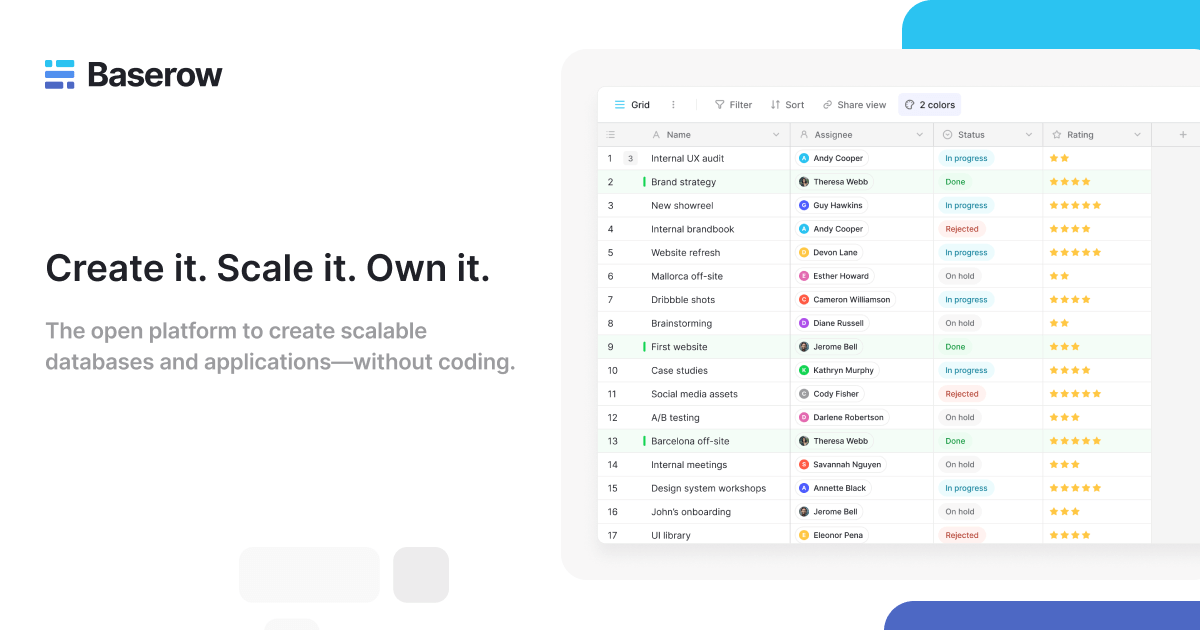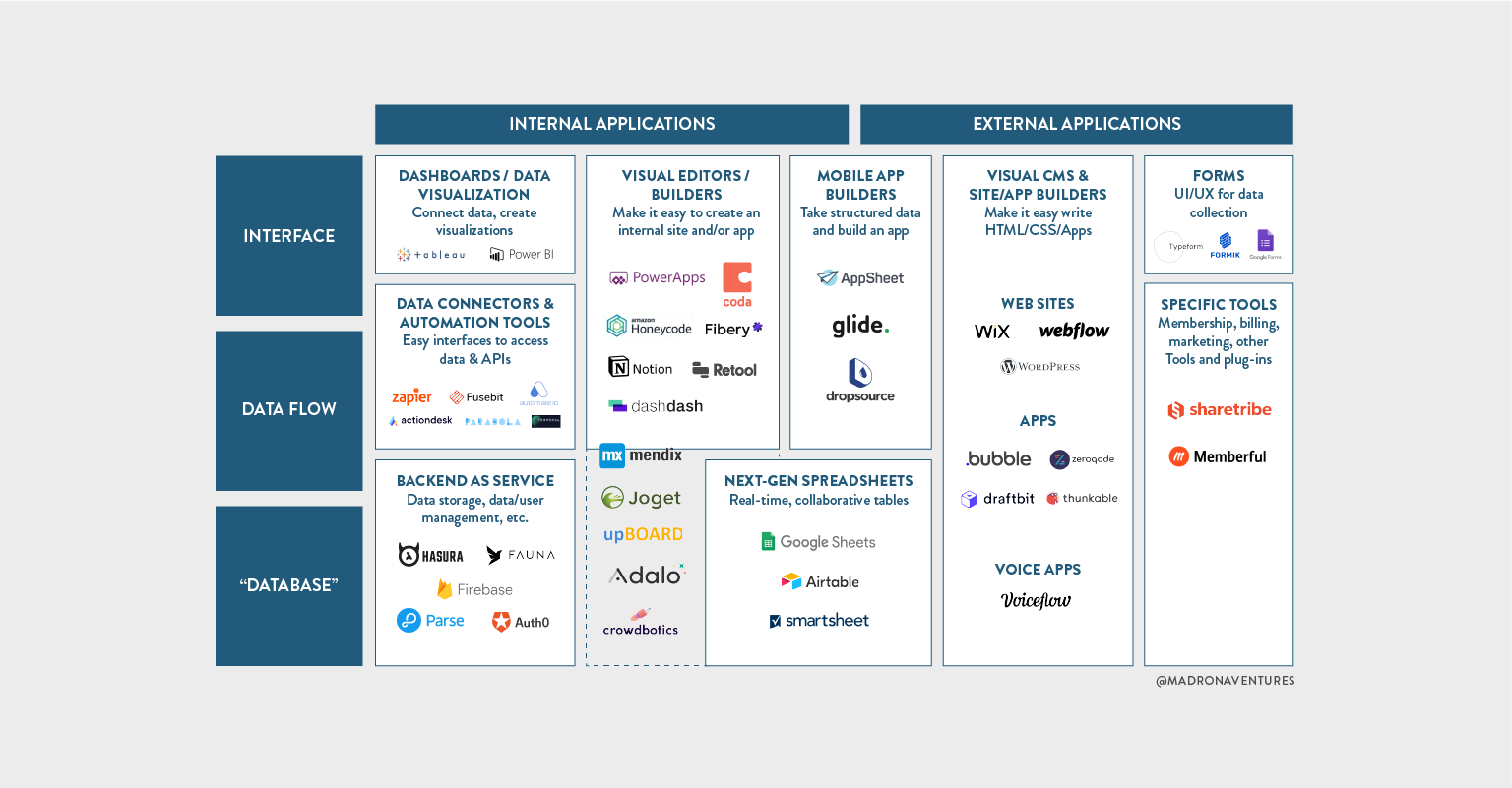Unlock the Power of No-Code for Open Platform Database Creation
A Comprehensive Overview to Applying Scalable Data Sources Without the Demand for Coding Expertise
In the modern landscape of data administration, the ability to execute scalable data sources without coding know-how is becoming progressively crucial for companies of all dimensions. This guide intends to light up the procedure, concentrating on easy to use tools and user-friendly interfaces that demystify data source arrangement. By checking out key attributes, efficient techniques for application, and best methods for recurring management, we will attend to exactly how also non-technical users can confidently navigate this complex surface. What are the crucial elements that can absolutely equip these individuals to leverage scalable data sources successfully? The answers might redefine your technique to data management.
Comprehending Scalable Databases
In the world of modern-day information monitoring, scalable databases have become a crucial service for organizations seeking to manage enhancing volumes of info successfully. These databases are made to fit development by permitting the smooth enhancement of resources, whether with horizontal scaling (including more equipments) or vertical scaling (upgrading existing devices) This adaptability is necessary in today's hectic electronic landscape, where data is produced at an unmatched price.
Scalable databases usually make use of distributed designs, which make it possible for data to be spread out across several nodes. This distribution not only improves efficiency however additionally offers redundancy, making certain data accessibility also in case of equipment failures. Scalability can be an important factor for various applications, including shopping platforms, social media networks, and big data analytics, where customer need can rise and fall considerably.
Additionally, scalable databases commonly include durable information uniformity designs that balance efficiency and integrity. Organizations should consider their certain requirements, such as read and write rates, data honesty, and fault tolerance when selecting a scalable database option. Ultimately, understanding the underlying concepts of scalable databases is important for businesses intending to prosper in a progressively data-driven globe.
Key Functions to Search For
When examining scalable databases, numerous essential features are critical to making sure optimum performance and integrity. Primarily, consider the design of the data source. A dispersed architecture can boost scalability by permitting data to be stored throughout several nodes, facilitating smooth information gain access to and processing as need boosts.
Another crucial function is information dividing, which enables reliable administration of large datasets by separating them into smaller sized, a lot more manageable items (no-code). This method not just enhances efficiency however also streamlines resource appropriation
In addition, search for durable replication capabilities. This function ensures information redundancy and high availability, reducing downtime throughout maintenance or unanticipated failures.
Efficiency tracking tools are additionally vital, as they provide real-time understandings into system health and wellness and operational effectiveness, enabling timely modifications to keep optimum performance.

User-Friendly Database Devices
Simpleness is a vital element in the layout of straightforward database devices, as it improves accessibility for customers with varying levels of technological know-how. no-code. These tools focus on user-friendly user interfaces, allowing users to develop, manage, and query databases without calling for substantial programming expertise
Key attributes commonly include drag-and-drop capability, aesthetic data modeling, and pre-built layouts that improve the arrangement process. Such devices commonly offer assisted tutorials or onboarding processes that assist in user involvement and decrease the understanding curve. In addition, seamless assimilation with preferred information resources and services makes certain that individuals can easily import and export data, even more streamlining operations.

In addition, durable assistance and neighborhood resources, such as discussion forums and documentation, enhance the user experience by giving aid when needed. On the whole, easy to use database devices encourage organizations to harness the power of scalable databases, making this contact form data management accessible to everyone entailed.
Step-by-Step Implementation Overview
How can companies efficiently implement scalable data sources to meet their growing information requirements? The procedure begins with recognizing particular information needs, including the quantity, range, and velocity of information that will certainly be processed. Next, companies need to assess user-friendly database devices that supply scalability functions, such as cloud-based services or handled database solutions.
When the appropriate tool is picked, the following step entails setting up the data source setting. This includes establishing circumstances, specifying user consents, and developing information frameworks that line up with organization objectives. Organizations needs to after that migrate existing data into the new system, making certain data integrity and minimal interruption to procedures.
Post-migration, performing extensive screening is critical; this includes performance testing under various load conditions to guarantee the system can manage future development - no-code. In addition, it is vital to train staff on the database administration interface to assist in smooth use
Ideal Practices for Management
Effective management of scalable databases needs a calculated technique that prioritizes continuous tracking and optimization. To achieve this, companies need to apply robust tracking tools that supply real-time understandings right into data source efficiency metrics, such as query reaction times, resource usage, and deal throughput. Routinely assessing these metrics can assist recognize traffic jams and locations for improvement.

Normal back-ups and disaster recovery plans are important to safeguard data integrity and accessibility. Establishing a regular for examining these back-ups will certainly guarantee a reliable recuperation process in situation of an unforeseen failing.
Moreover, efficiency tuning ought to be a continuous process. Readjusting indexing methods, maximizing inquiries, and scaling resourcesâEUR" whether up and down or horizontallyâEUR" will assist keep ideal efficiency as use demands advance.
Lastly, promoting a society of knowledge sharing amongst staff member will make it possible for continuous discovering and adjustment, ensuring that the administration of scalable data sources remains reliable and efficient in time.
Verdict
To conclude, the implementation of scalable databases can be properly achieved without coding experience through the usage of user-friendly user interfaces and straightforward devices. By sticking to the outlined strategies for setup, information movement, and efficiency screening, people can browse the complexities of database administration effortlessly. Stressing ideal practices for ongoing upkeep and collaboration further enhances the ability to manage scalable databases efficiently in a rapidly developing data-driven environment.
In the contemporary landscape original site of data administration, the capability to apply scalable data sources without coding expertise is becoming progressively crucial for organizations resource of all dimensions.In the world of modern-day information monitoring, scalable data sources have actually arised as an essential option for companies seeking to deal with increasing volumes of details effectively.Moreover, scalable databases frequently feature robust information uniformity designs that balance performance and reliability.Just how can organizations effectively implement scalable databases to fulfill their expanding information demands? Next off, companies must assess easy to use database devices that use scalability functions, such as cloud-based solutions or managed data source services.